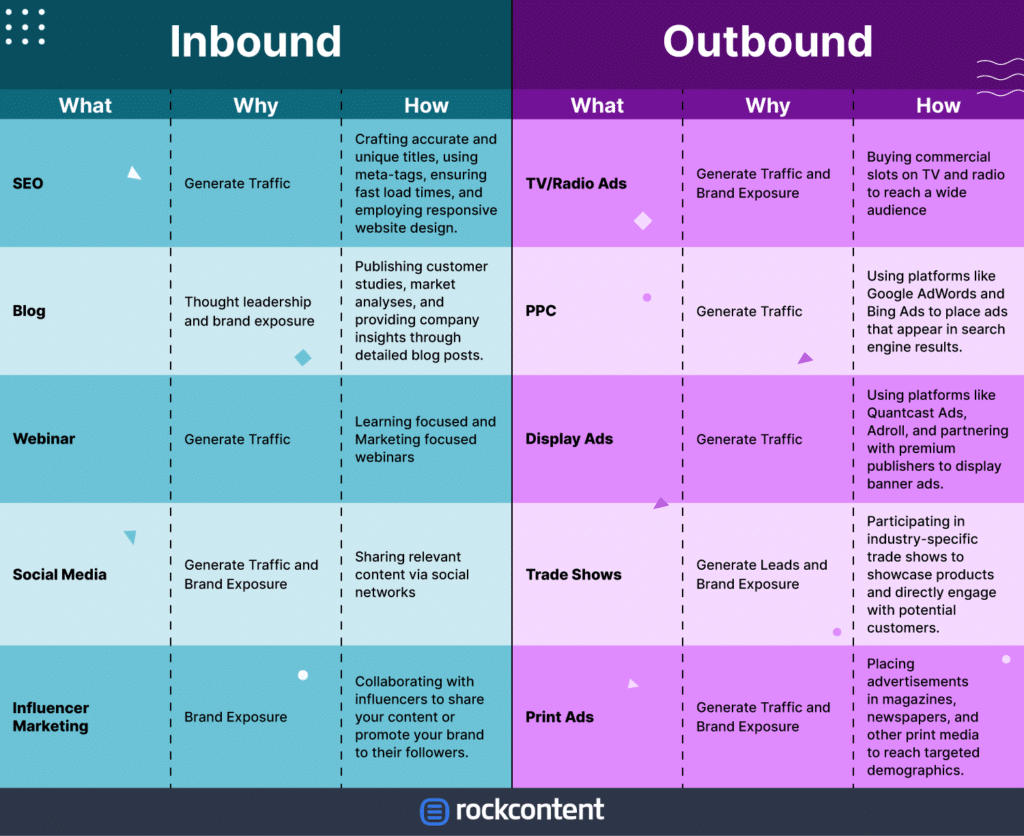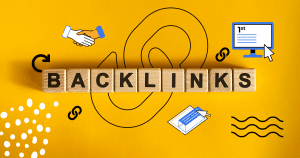The Internet and social media have forever changed the way companies search for new clients. It leveled the playing field, allowing even small startups to fight for the spotlight alongside big, consolidated brands.
But more opportunities also mean more competition. So, how can your business reach a wider audience and attract new clients while investing less money?
The answer is Inbound Marketing. This strategy is a smart way to build a great online presence for your company. It generates awareness, engages the audience, converts more, and increases customer loyalty.
This text will go over:
- What is Inbound Marketing?
- What does Inbound Marketing do?
- What are the differences between Inbound and Outbound Marketing?
- What are the benefits of Inbound Marketing?
- How to structure an Inbound Marketing strategy and attract more clients?
- Wrap Up
What is Inbound Marketing?
To understand what Inbound Marketing means in a broad sense, you can think about your habits as a customer. What do you do when you are interested in buying something? It probably starts with a simple Google search.
Many times you won’t know at first what you really want. You’ll probably search for “best phones of the year” or “how does a web hosting service work”.
By doing that, you will learn more about the problem you want to solve or the product you want to buy.
Then, you will consider the options. You will compare brands and models, analyze the pros and cons and understand in detail the products available. This is the moment when you narrow them down and finally decide to purchase a product or service.
That path is basically the same for almost every consumer in the internet world. One so important that we even got a name for it: customer journey.
When companies and agencies started noticing this trend, they looked for strategies and techniques that could take advantage of consumer habits, reaching and engaging them more effectively.
The result of that effort is what we call Inbound Marketing, a methodology that helps you attract visitors and convert them into leads and customers.
What does Inbound Marketing do?
The idea behind Inbound Marketing is to create content and experiences that are both interesting and useful to the target audience.
So, instead of actively reaching out to them, the strategy is to become present in their online life, offering help whenever they need it. It works even if they don’t want to purchase something right now.
All the companies that understand the value of relationships and emotional connections with potential clients use Inbound Marketing these days.
This means that companies are interacting and engaging on social media and providing relevant information on topics that may interest potential buyers, which also creates a voice and a face for the brand.
A great Inbound Marketing strategy achieves the following milestones:
- Improved lead generation and lead quality;
- Increased website traffic from organic sources;
- Better rankings on search engines (especially Google) and the brand is more visible;
- Increased conversion rates so the company sells more, spending less;
- Improved overall marketing ROI.
All these positive results are achievable by any kind or size of business. You just need the right tools and the right plan.
What are the differences between Inbound and Outbound Marketing?
Outbound Marketing still has its place today, but it is being seen as more and more inadequate, especially for startups and small businesses.
The main difference is that an Outbound strategy is focused on reaching the public directly and somewhat blindly.
A traditional example of it would be a door-to-door salesman or TV commercials. Brands go out there and ask the audience for their time, to interrupt everything and listen about a product.
It works, sure, but the goal, in this case, is to win by numbers — actively broadcast a message to a lot of people and hope for a good amount of viewers to become leads.
It takes time, it takes effort, and it will cost a lot of money. That is why Inbound Marketing is becoming the go-to option for those who want to optimize their work and attract new clients.
If an outbound strategy forces a company to go after its audience, an inbound one sets the field so they will find the brand first when looking for a product, a service, or a solution.
When a business becomes a reference in its market, through relevant content and close connection with the target audience, you don’t go to them anymore, they come to you.
That kind of power today is enough to make a huge impact on the market.
What are the benefits of Inbound Marketing?
Inbound Marketing isn’t the most expensive or demanding strategy — that is why it is so popular. But it asks for commitment and business intelligence.
Why, then, would you do it? The benefits come from a successful plan more than compensate for your hard work. Here they are!
Lower CAC
Customer Acquisition Cost (CAC) is a very important KPI because it tells how much your company is spending to attract every new client.
A successful Inbound Marketing strategy improves your numbers in all its stages: attract, engage and delight. And it does that without a proportional increase in budget.
You spend the same amount or less to have better results — as Inbound practices are often less expensive and more assertive than traditional marketing.
That means a potential for a lower CAC month after month. It becomes easier and cheaper to convert.
Higher brand awareness
Most of the time, being the first brand to pop up in someone’s mind is enough to win the competition. Even when they are not yet ready to become a lead, being present means being remembered.
Easier to track results
Using the same TV commercial as an example, how can you precisely measure the success of that strategy? How many people did the brand reach? How many watched the ad? How many of those leads became clients?
That is a great advantage of Inbound Marketing and one that is making so many companies leave traditional advertising behind.
KPIs associated with interactions with content and social profiles make it possible to fine-tune your message and calculate its exact impact on the audience.
After all, the “Era of Information” benefits those who know how to analyze numbers and act fast to adjust strategies and follow trends.
The combination of intelligence and empathy is key to connecting and engaging with the people who matter to your business.
How to structure an Inbound Marketing strategy and attract more clients?
So let’s understand how you can do it. A successful Inbound Marketing strategy lies in knowing your data, planning in advance and never stopping.
Some fundamental steps could lead you to great results by reaching and converting more leads. Check them out!
1. Understand the cycle of Inbound Marketing
The first thing you need to know is that Inbound is usually divided into a three-part cycle: attracting, engaging, and delighting. Let’s see what they mean.

Attracting
This step of Inbound Marketing is mainly focused on content. You have to produce and share blog articles, videos, tutorials, infographics, or anything that is valuable and makes sense for your future clients.
Relevant content educates and solves questions related to customer pains. It is useful and guides their research on a certain topic.
This way, you can become an authority on the matter, being present right at the moment when your buyer persona is looking for the right answers.
Engaging
The “Engage” part of the Inbound strategy is focused on generating leads, potential customers who have already interacted with some of the brand’s content.
Here is where social media really shines, along with email automation and more direct communication with the audience.
The main goal is to provide great customer service, show your best selling points and present real value for the consumer.
Delight
To delight a customer, you have to pay attention to one important keyword: experience. The act of buying, the delivery of the product/service, and the support post-purchase are all crucial for an Inbound strategy.
As we said before, part of your success will be measured by how many of your converted clients recommend and promote your brand.
So the purchasing process itself should also be selling your brand. Delighted customers become loyal and influencers within their social circles.
What does help your strategy at this point? Investing in an efficient site is crucial. You have to remove as many obstacles as you can between interest and purchase and then exceed expectations in each step after that.
2. Know your buyer persona better
Now that we know about the Inbound Marketing cycle, let’s take a step back. How can you be sure that you’re attracting, engaging, and delighting the right people?
All Inbound Marketing strategies are planned based on buyer personas. They are fictional profiles derived from your target audience that include demographic information such as age and nationality, as well as psychographic information such as personal characteristics, desires, and pains.
The more data you have on your buyer persona, the more accurate your messaging will be. Talking to one person is way easier than to thousands.
Building your buyer personas now will help you find a coherent and attractive voice for all future content and interactions.
With this tactic, a brand gains a personality, which can create even deeper connections with the leads that really matter.
3. Focus on SEO
Search Engine Optimization is a crucial part of an Inbound Marketing strategy and one that deserves more investment. It is the set of tools and practices that puts your site and profiles on top of Google search results for relevant keywords.
You can achieve this first with a well-structured site focused on information architecture and usability. We’re talking about:
- working with relevant keywords;
- optimizing tags;
- writing informative titles and meta descriptions;
- optimizing images for loading times and better alt texts;
- working on a responsive website.
Each one of these steps will not only help to deliver a better experience to users but also make your site more relevant for Google — bringing you to the first page on popular keywords.
4. Plan a Content Marketing strategy
Content Marketing is exactly what you need to get better results with SEO. It means planning and producing relevant content that will be useful for your persona and build a trustworthy image for your brand.
When sharing content, you’ll need to be smart and consistent: publish regularly and think about the different stages of the customer journey — aligned with the buying cycle of attraction, engagement, and delight.
Another important concept here is called the purchase funnel. This model describes the usual customer journey through four main stages: awareness, interest, desire, and action.
Content Marketing is about delivering good, attractive, and trustworthy information for all four of them. From the top (awareness) to the bottom of the funnel (purchasing decision).
From educational content to feature comparisons and considerations about your products or services’ main selling points.
This part of Inbound is so vital that we recommend searching for professional help. With great content and frequency, you can improve your SEO and become an authority on the subjects that matter to your audience.
5. Be smart about your online presence
Some aspects of Inbound Marketing can’t be planned. In social media, a business is always subject to questions, doubts, and complaints. It is always good to be able to improvise under strict parameters.
If a business can’t be always present, it can be smart about it. There are tools and platforms that organize and automate CRM that can help you. Quick responses are part of delighting. It is an opportunity to transform dissatisfaction into loyalty.
Having good data about your buyer persona helps here too. Customers search for more than selling points. They search for connections, long-term relationships, and identification with the brands they consume.
With a coherent voice and a defined personality, the brand can be perceived as a person and start engaging people as one.
6. Follow up after the purchase
When you have to put so much effort into selling more, it is easy to forget about the client after they purchase something. This is a mistake a lot of professionals tend to make, even more experienced ones.
Inbound is all about marketing to those who already converted too. Content and interactions can be specifically designed to talk to those people and invite them to relive a delightful experience.
Think about it: it takes less effort and less money to influence a customer to purchase again than it does to attract a new customer. Growing a loyal customer base optimizes investments in marketing and makes the business more sustainable.
Some strategies work well for bringing back clients: discount coupons, automated emails, and loyalty programs are some of them.
7. Never stop tracking your results
Like any aspect of a business, your performance indicators are vital to the success of a great Inbound Marketing strategy.
They help in understanding the audience and investing more in the right channels and content.
Also, these numbers can tell you how well your plan is being executed. They can give you insights for adjusting and tweaking it as you go.
If you don’t know how your campaign is performing and what your buyer persona is demanding from you next, it is easy to get lost and start making bad decisions.
With that in mind, define the best Key Performance Indicators (KPIs) for your strategy and implement a monitoring methodology to track these numbers.
It’s good to have solid parameters and automated reporting tools to help you analyze data assertively without spending too much time.
Wrap Up
So now you know everything you need to start an Inbound Marketing strategy.
With some professional help, knowledge of your buyer persona, and a lot of planning, you can have great results. It is time to build a structure that will lead your company to success.
And how about starting it now? Share this post on social media and start reaching those who are ready to engage with your brand’s voice!










